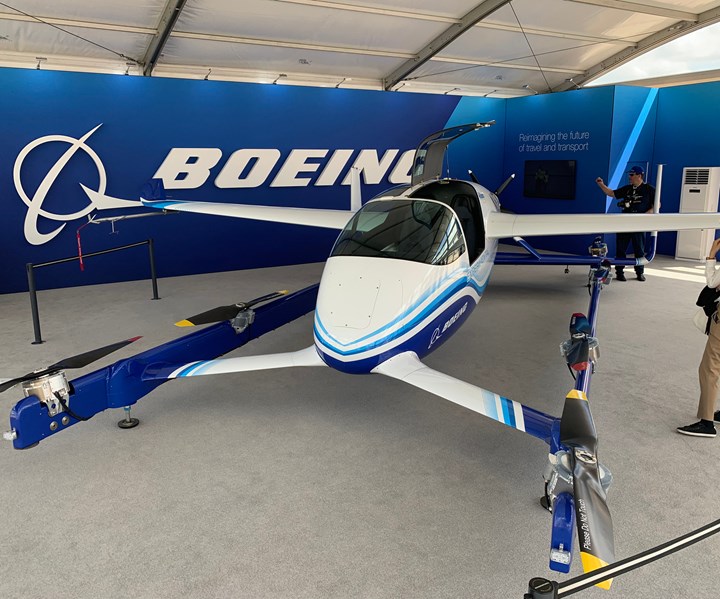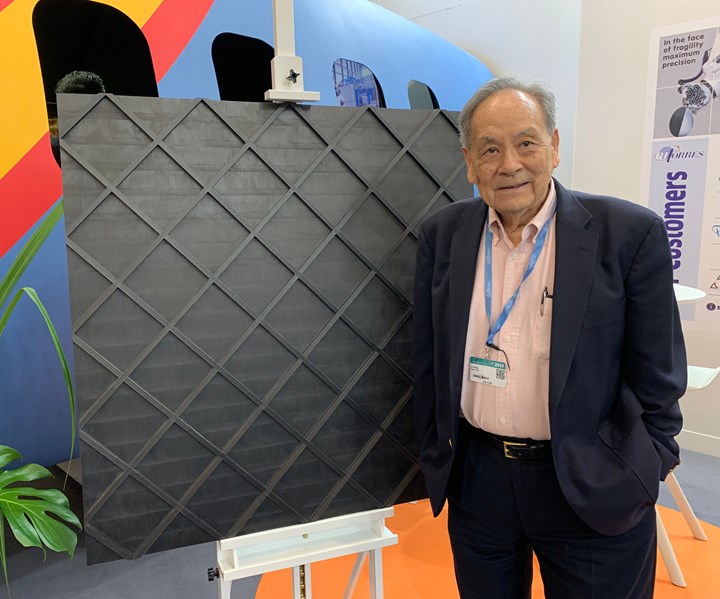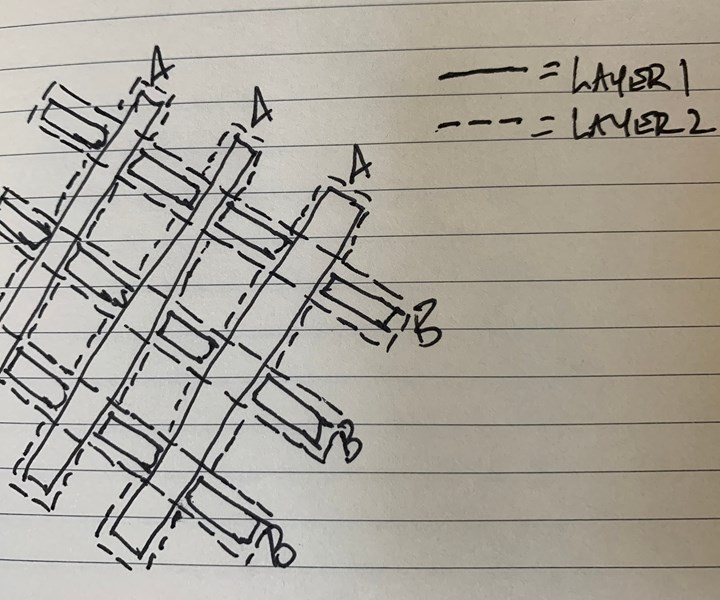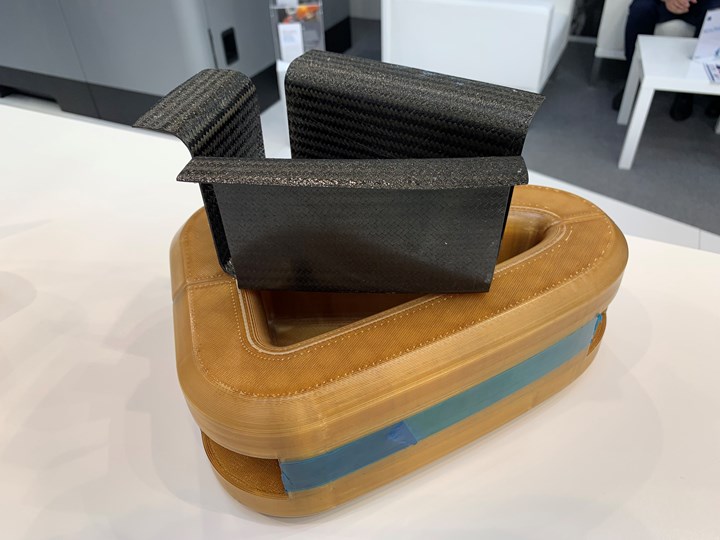
Expectations were mixed going into the 2019 Paris Air Show (June 17-23). Boeing, it was hoped, would lay more groundwork for the New Midsize Aircraft (NMA), but the 737 MAX crisis has consumed much of the company’s energy and attention. Indeed, on day one of the air show, Boeing provided a very general announcement regarding business conditions and issued its 20-year commercial aircraft forecast. Nothing on NMA. The biggest splash Boeing made during the show was the news that it had sold 200 737 MAX aircraft to International Airline Group (IAG).
Airbus, on the other hand, announced the A321XLR (LR = long range), the latest iteration of the A320neo. Scheduled to enter service in 2023, the A321XLR will have a range of 4,700 nautical miles, achievable through additional fuel storage capacity. Airbus said that the plane’s range will provide airlines less expensive single-aisle options on routes now served primarily by more expensive double-aisle aircraft. Such routes include New York-Rio, Shanghai-Sydney and Madrid-Dubai.
Despite the lack of NMA news, among the composites-related companies exhibiting at the Paris Air Show, there remains a definitive effort to develop and align materials and process technology to meet whatever demands Boeing and Airbus place on the supply chain in the coming decade. This includes traditional thermoset prepregs with autoclave cure, liquid resin infusion of dry fibers with out-of-autoclave cure, thermoplastic composites and additive manufacturing. The sense of expectation throughout the supply chain is palpable.

Out on the flight line, there was the usual array of commercial, military and civil aircraft, with daily flight demonstrations. Notable in the air were demonstrations of electric-powered aircraft, which were a stark and quiet contrast to the deafening roar associated with the fighter and commercial jets. In the static displays, there were a number of EVTOL (electric vertical takeoff and landing) craft targeted toward the urban mobility market. This aircraft type, in particular, is proving a significant target of composite materials, which are a necessity for electrically powered flight. However, the production volumes of some of these platforms likely will number in the thousands per year, which pushes material and process technologies more toward an automotive-ish production model. That said, EVTOLs are in their youth, particularly given the regulatory, qualification and airspace management hurdles yet to be cleared.
Below are highlights from the show.
Spirit AeroSystems. The world’s largest airframer, Spirit AeroSystems (Wichita, Kan. U.S.), started the show off early Monday morning with a press conference announcing the introduction of its ASTRA fuselage panel (Advanced Structures Technology and Revolutionary Architecture), designed to show how a fully composite fuselage could be designed to meet the performance, rate and cost requirements of a next-generation single-aisle aircraft. The design and manufacture of that panel are covered in a standalone story here.

MTorres. Another composite panel of note at the show was found at the MTorres (Torres de Elorz, Navarra, Spain) stand. This rib-stiffened “grid/skin structure,” manufactured via resin infusion of dry carbon fibers, actually is the brainchild of Stephen Tsai, composites veteran and professor of aeronautics and astronautics, emeritus, at Stanford University, who was in the MTorres stand to explain it. Tsai said he conceived this design several years ago and based it on the grid/skin structure deployed in the manufacture of the Vickers Wellington, a British World War II bomber manufactured by Vickers-Armstrongs and famous for maintaining structural integrity in crashes. To bring this design to life in a composite application, Tsai designed the ribs in a lattice structure, with each rib a fixed width and height, and spacing between ribs also fixed.

Steve Tsai stands with the rib-stiffened panel he designed and MTorres helped him fabricate. The key enabler is accurate fiber placement to build the ribs. Source | CW
The challenge of his design, Tsai said, was to develop rib intersections that could withstand large mechanical loads. What he came up with was a rib architecture that uses carbon fiber tapes placed continuously in one direction (call it A), and discontinuously in the intersecting direction (call it B). Then, for the next layer, tapes would be placed discontinuously in the A direction and continuously in the B direction. This pattern would continue until the rib’s desired thickness is reached. In this way, each rib joint would always be crossed by a continuous tape. Once the ribs are built in the tool, a skin is laid over it via automated fiber placement (AFP) or automated tape laying (ATL) and the entire structure is co-cured.
The advantages of this design, said Tsai, are several, but the primary is that it is “hard for damage to go beyond the localized area,” meaning that a crack propagated in the skin cannot easily migrate beyond any of the ribs that border the affected regions. Tsai also said the grid/skin structure is highly weight and material efficient. Still, he noted, “This is easy to design but difficult to make.” Which is where MTorres comes in.

Tsai said the limiting factor in the fabrication of his panel design had been the placement of the rib tapes. To be fully industrialized, they required tape placement cutting speed and accuracy that, until recently, had not been possible. However, Tsai approached MTorres with his design and asked if the ATL/AFP specialist could do the job. Iñigo Idareta, special projects department head at the company, and the MTorres’ composites team were put to the task and worked with Tsai to adapt MTorres’s technologies to the application. There were two challenges, said Idareta at the air show: fine-tuning tape-placement cutting speed and accuracy, where MTorres’ AFP cut-on-the-fly capability was key to keep a constant high layup speed; and development of tooling solutions that allowed buildup of each rib without the rib losing stack integrity. Further, the use of MTorres’ own dry carbon fiber format for AFP applications was needed to make this challenging infusion work. All were achieved, said Idareta. Also achieved, based on Tsai’s design, is use of off-angle fiber placement of the panel’s skin, which is four plies and about 1.2 mm thick.

The carbon fiber used was a dry 50K material from Mitsubishi Chemical Carbon Fiber & Composites Inc. (Sacramento, Calif., U.S.), chosen primarily because it happened to be the material MTorres had on hand. The resin was a “standard” industrial-grade toughened epoxy. Idareta says the panel was tested by Alan Nettles at NASA and performed well. Rib/skin bonding in particular, he said, was excellent. Tsai admitted that the panel's weak spot is the rib joint which is a cross-ply [0/90] laminate. The ribs were all [0]. So the joints had about half of the uniaxial tensile strength and a little more than half of the uniaxial compressive strength. Even with that weakness, the grid/skin strength is more than twice current aluminum technology of the same design, not counting the additional lighter weight of the composites. Tsai also said that aluminum, to achieve the same strength properties as provided by his design, would weigh three times as much.
What’s next for this technology? Tsai said it is “ready for application,” and listed several possible part types: fuselage structures, space launch vehicle bodies, automotive panels, battery cases. Idareta said MTorres is working on iterating the design, including developing a curved panel and a full barrel panel. Both, he said, are within reach.
Also, there are several aspects of Tsai’s design could be modified to meet a variety of load cases. These include rib width, rib height, angle of intersection and space between ribs. Also, although MTorres used infusion to make the panel on display at the air show, it could be fabricated using traditional thermoset prepreg.
GKN Aerospace. Commercial wing specialist GKN Aerospace (Redditch, U.K.) announced at the air show that it has manufactured the first parts for its portion of work on the Airbus Wing of Tomorrow program, a five-year (2018-2022), multi-company, U.K. Catapult effort to develop materials and process technologies for high-rate (100 per month) fabrication of resin infused carbon fiber composite wings to be deployed on a next-generation single-aisle aircraft.
Paul Perera, VP technology at GKN Aerospace, was at the air show and provided further details about the program. He said GKN currently has 60 people working on the spar and ribs for the wing, with the bulk of the work being done out of GKN’s Global Technology Center, which is moving into new facilities in Filton, U.K., later this year.
The spar will be dry fiber placed by GKN and then infused. The ribs will be fabricated from both thermoplastic composites and aluminum. The National Composites Centre (Bristol, U.K.) is working on several technologies for Wing of Tomorrow, including iCAP (digital capability acquisition programme) to develop data-based automation solutions, as well as automated fiber cutting and placement systems developed by Loop Technology (Poundberry, Dorchester, U.K.) that will be employed in wing fabrication. Northrop Grumman (formerly Orbital ATK, Clearfield, Utah, U.S.) is developing stringers for the program. Lower wing skins will be fabricated by Spirit AeroSystems at its Prestwick, Scotland, facility; Upper wings skins will be fabricated by Airbus. The goal is delivery of three shipsets to the Airbus wing plant in Broughton, U.K., for assembly in the next 18 months, with the first in June 2020, the second in late 2020 and the third in early 2021. Ultimately, if the program progresses as planned, it will prove resin infusion as a viable process for high-rate production of a composite wing for a next-generation single-aisle. Perera says 1-meter spar sections produced and assessed at the GKN facility on Isle of Wight, U.K. show that the materials and process are a good fit for the application.
Perera noted that a major portion of the Wing of Tomorrow program will revolve around automation development. In fact, he said, automation will be a key enabler of resin infusion for next-generation aerospace manufacture.
Solvay Composite Materials. If you are looking for evidence of how the focus on aerospace manufacturing industrialization and production efficiency is trickling down to materials suppliers, look no further than Solvay Composite Materials (Alpharetta, Ga., U.S.), which is in the middle of a multi-year effort to re-assess where and how it produces aerospace-grade resins, tapes and prepregs. The emphasis for Solvay is on development of an operations strategy focused on facilities that produce fewer product numbers on highly specialized equipment that can meet the rate and quality requirements of next-generation aircraft. Marc Doyle, Solvay’s executive VP aerospace, says the company’s new facility in Wrexham, Wales, U.K. is symbolic of this effort. That plant, which opened in September 2018, produces just two product numbers (adhesives), but in a highly structured, highly optimized, automation-dominant environment designed to meet the just-in-time requirements of its customers. The company expects to follow this model with all new facilities, and will attempt to convert legacy plants as well.
On the materials innovation front, Solvay highlighted two notable efforts — one focused on thermoplastics and the other on carbon fibers. Mike Blair, executive VP of research and innovation, said one of the biggest challenges/opportunities of thermoplastics is their high temperature delta; that is, the high process temperatures of thermoplastics can cause coefficient of thermal expansion (CTE) problems in parts as they cool, particularly large parts. The goal? Modify polyketone chemistry to reduce process temperatures, without affecting glass transition (Tg) temperature. The company also is looking at ways of boosting the processability and handling in automated equipment of its thermoplastics. “Our standard PEEK and PEKK materials actually work well,” Blair said. “We just need to modify them to make them more adaptable.”
The innovation surrounding carbon fibers is similarly intriguing. In 2017, Solvay acquired large-tow polyacrylonitrile (PAN) manufacturer European Carbon Fiber GbmH (Kelheim, Germany), which gave Solvay a new and healthy supply of PAN for 50K tow carbon fiber. Given this, the challenge was posed: Can a large-tow carbon fiber be formatted to provide the performance characteristics of an intermediate modulus (IM) small-tow carbon fiber? Blair said the idea is thought-provoking, but not trivial. He noted that just handling 50K tow fiber can, in and of itself, damage the fiber. So, without revealing too much about what Solvay has in mind, Blair said the company is working on handling technology designed to avoid fiber damage. “An aggressive schedule for this,” he said, “would be 18 months.”
Toray Advanced Composites. The former TenCate Advanced Composites has now been fully absorbed by Toray and, since March, goes by Toray Advanced Composites (Morgan Hill, Calif., U.S.). Steve Mead, managing director, says the EVOTL is a particularly active one for the company right now (thermosets and thermoplastics). He noted that “we are supplying material to emerging EVOTL programs,” adding that “composites are a true enabler because of the parasitic battery weight on these aircraft. Non-composite materials are not an option.” The combination of aerospace quality fabrication at automotive rates is intriguing, he said.
Eviation. Among the higher profile introductions at the Paris Air Show was Alice, an all-electric, all-composite aircraft introduced by Eviation (Kadima-Tzoran, Israel). Alice is a nine-seat regional transport aircraft that has a range of 650 miles/1,000 kilometers at a cruising speed of 240 knots. The plane features one primary pusher propeller at the tail and two additional pusher propellers at the wing tips to reduce drag and create redundancy. Omar Bar-Yohay, CEO of Eviation, introduced the plane and said flight testing would be done in Moses Lake, Wash., U.S., followed by U.S. Federal Aviation Administration (FAA) certification in late 2020 or early 2021. The plane will have a list price of $4 million and Bar-Yohay said that the company is fully funded through certification and early production.

The craft on display at the show was a non-flying prototype assembled just the week before. Where and how this plane will be ultimately produced remains to be seen. The prototype, for its part, was assembled from composite structures fabricated by several suppliers. One is Multiplast (Vannes, France), part of Carboman Group SA (Vannes), a five-company roll-up that also includes Decision (Ecublens, Switzerland), SNE SMM (Lanester, France), Plastinov (Samazan, France) and Plastéol (Samazan). Multiplast, which has a history in marine structures manufacturing, fabricated the fuselage for the Alice out of autoclave (OOA) using a sandwich structure with Nomex honeycomb core. The fuselage was built in two halves based on a starboard/port centerline configuration, with the two fuselage sections bonded/fastened together (see time lapse video below). Multiplast does not know if it will win the contract for series production of the craft, but the company says it is assessing what would be required from a materials and process perspective to industrialize fabrication. Wings and belly fairings for the Alice were supplied by Composite Cluster Singapore (CCS).
Stratasys. Additive manufacturing (AM) machine specialist Stratasys (Eden Prairie, Minn., U.S.) was at the Paris Air Show emphasizing its ability to use AM for parts and tooling production. For composites manufacturing, the emphasis was on tooling. The company had on its stand two molds made using Stratasys machines. The material is SABIC’s ULTEM 1010, an unreinforced polyetherimide (PEI) that is conducive to autoclave processing. The first mold was for fabrication of a carbon fiber wing leading edge and features in-mold electrodes to boost prepreg heating capacity and reduce cure time from 1.5 hours to just 10 minutes. The other part was a layup tool made by Boom Aerospace (Centennial, Colo., U.S.) for production of small parts for the Overture supersonic commercial airplane the company is developing. Scott Sevcik, VP manufacturing solutions at Stratasys, said Boom has two Stratasys machines in use already, with a third being delivered later this year. Sevcik said Stratasys is expected to introduce two new chopped carbon fiber-reinforced materials for AM use later this year; Stratasys, he said, is also working on continuous fiber reinforcement for AM.

Boom Aerospace. Another splashy announcement at the Paris Air Show came from Boom Aerospace (Englewood, Colo., U.S.), which, as noted, is developing Overture, an all-new supersonic passenger aircraft. Boom CEO and founder Blake Scholl said in a press conference that Boom is nearing completion of the composites-intensive XB-1, a subscale prototype of the Overture that is expected to be rolled out by the end of 2019 and test flown sometime in 2020. These test flights, said Scholl, are designed to help Boom assess design and engineering principles of the aircraft, and apply lessons learned to final design and production of Overture, which is expected to enter service in the mid-2020s. This is a longer schedule than first anticipated by Boom. “This is an ambitious project,” said Scholl. “In the early days, it’s easy to be too optimistic.”

Overture is expected to have a maximum speed of Mach 2.2, a cruising altitude of 60,000 feet (19,354 meters) and will take passengers (55-75) from Sydney to Los Angeles in just 7 hours, or Washington D.C. to London in just 3.5 hours. Scholl stated that ticket cost on Overture is expected to be competitive, on a seat-per-mile basis, with current airline pricing. Scholl also said that Overture is expected to use a technology called Prometheus Fuels, which converts atmosphere carbon into gasoline or, in Boom’s case, jet fuel, using electricity sourced from renewable resources. In this way, he said, the plane will provide zero net carbon supersonic flight.
Related Content
Composites end markets: Automotive (2023)
Electrification and a focus on sustainability lead to opportunities and innovations in composites, from battery enclosures to structural components and more.
Read MoreThe next evolution in AFP
Automated fiber placement develops into more compact, flexible, modular and digitized systems with multi-material and process capabilities.
Read MoreThermoplastic composites welding advances for more sustainable airframes
Multiple demonstrators help various welding technologies approach TRL 6 in the quest for lighter weight, lower cost.
Read MoreA new era for ceramic matrix composites
CMC is expanding, with new fiber production in Europe, faster processes and higher temperature materials enabling applications for industry, hypersonics and New Space.
Read MoreRead Next
Composites end markets: Energy (2024)
Composites are used widely in oil/gas, wind and other renewable energy applications. Despite market challenges, growth potential and innovation for composites continue.
Read MoreCW’s 2024 Top Shops survey offers new approach to benchmarking
Respondents that complete the survey by April 30, 2024, have the chance to be recognized as an honoree.
Read MoreFrom the CW Archives: The tale of the thermoplastic cryotank
In 2006, guest columnist Bob Hartunian related the story of his efforts two decades prior, while at McDonnell Douglas, to develop a thermoplastic composite crytank for hydrogen storage. He learned a lot of lessons.
Read More






























